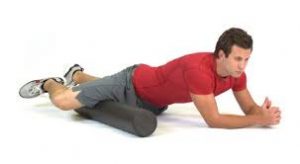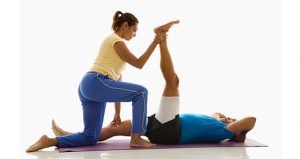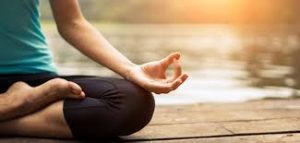As cricketers, we have to go through a lot of wear & tear throughout our training. Sometimes due to lack of recovery our muscles tend to stiffen up. There can be many other reasons of having stiff muscles but don’t worry that’s normal. What isn’t normal is that when we don’t stretch our muscles & bring it back to its original length which improves functionality in sports. However, hyper mobility (being unnaturally over flexible) can affect
your performance in a negative way and at the same time cause injuries due to highly laxative joints. People suffer more from stiffness than hyper- mobility. Apart from sportsmen today’s general population is living a sedentary lifestyle with little to no emphasis on exercise as well as nutrition. Here are 5 solutions to improve your flexibility.
1) Self-Myofascial Release (SMR)/ Foam Rolling:-

You can use specific objects such as foam roller, golf ball, medicine ball to release the trigger points (sensitive points of muscles) in your body, connective tissue (fascia) & tight muscles. Recommended usage of SMR is 10-12 minutes whole body before & after the training session every day. Try to create extra force against the object which will help release deep tissue and give you better results. This will also help in breaking up scar tissue & adhesions in muscles.
2) Mobility Drills:-

Sports is all about proper movements & movement patterns. The best way to improve movements is by doing mobility drills which in other words is known as dynamic stretches. Start a mobility routine with fundamental movements such as squat, lunges, thoracic rotations, shoulder rotations & opening up the hip. After fundamental movements start to progress towards sport specific mobility drills (in this case for cricketers) throwing, multi-directional lunges, squat jumps, lunge & twist. Mobility drills can be subjective which means some exercises may make you feel much better in functionality compared to other exercises. Do these before you start with any kind of training and see the benefits.
3) Active & Passive Stretching:-

Active Stretch:- You are actively moving one muscle group to stretch another. This can be achieved without a stretching partner or stretching accessories. Passive Stretch:- In passive stretching there is an external fore being provided. This can be achieved through partner stretches, using stretching accessories or just using
gravity to assist your stretch.
Both active & passive stretches can be included in the part of cooldown as it also stops blood pooling in muscles as well as helps in bringing back heartrate to normal post exercise.
4) Proprioceptive Neuromuscular Functioning :-

This technique is used to stimulate the neuromuscular system in an effort to excite proprioceptors (sensory organs in muscles, tendons, bones & joints) in order to produce desired movements. Although this is one of the most beneficial technique to achieve flexibility it should only be performed with an expert (physiotherapist or strength & conditioning coach) because injuries to tendons, muscles & ligaments can occur if movement is not indicated or is too aggressive. For athletes coming out of injuries PNF stretches are used by physical therapists to bring back joint’s range of motion to normal.
5) Yoga:-

An ancient Indian practice which would require 2-3 more articles to explain in detail. But to put it in a simple way Yoga is an ancient Indian practice which involves all the 4 ways that are mentioned above. Which points out how
advanced ancient Indian science was that its still relevant even today. There is also a mind muscle connection involved during Yoga. I know people with great fitness levels who have maintained it by just daily Yoga
routines. Yoga is a mixture of strength, breathing technique, flexibility, mobility & mental awareness. Although many people who do Yoga are hypermobile which as I said can harm you in a negative way. Although it also depends on what sport you play (a gymnast benefits from hypermobility the reverse can be true for
power lifter).
Hope this helps you to achieve your desired flexibility goals. All the best.
BY FITNESS COACH
YUVRAJ SALVI



Comments are closed.